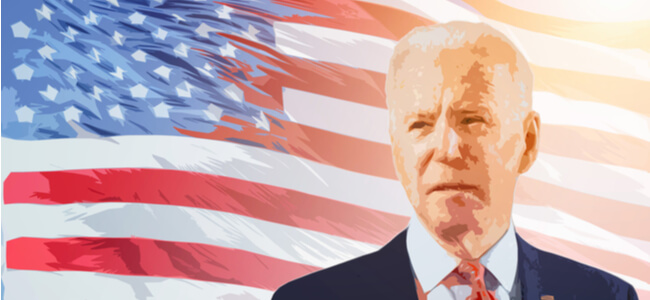Another Coronavirus Relief Effort - $10,000 Student Debt Forgiveness

Student loan debt in the US surpassed $1.56 trillion in 2020. It has now become a serious crisis across age groups and demographics. It is estimated that more than 44.7 million Americans have a student loan balance outstanding and the average amount owed is $32,731.
With the coronavirus pandemic bringing the economy to its knees, these numbers are rising by leaps and bounds.
The federal government launched a $2 trillion relief package under the CARES Act that includes nationwide small business loans, temporary forbearance on federal loans, IRS-sponsored tax relief, small business loans, stimulus checks, and more.
Fortunately, the Trump-led government has already suspended all federal loan payments from March 13th until September 30th.
Still, at this point, the suspension of loans alone is not of much help. Instead, many borrowers need loans to be outright forgiven.
In April, Democrat nominee Joe Biden promised in his agenda a plan under the 1800-page HEROES Act a minimum cancellation of $10,000 in student loan payments scaled to match the borrower’s income, and complete forgiveness of all federal student loans after 20 years. The Democrats are making an effort to provide this relief as tax-free debt cancellation for everyone who has an outstanding federal student loan.
In addition, they also want the Department of Education (ED) to assume all loan payments during the period of national emergency. This should be followed by another 3-month grace period during which all borrowers can forgo their due payments without any penalty. The Republicans, however, are pointing out their concerns about this proposal and much is to be decided in the coming days and weeks as the economy gradually reopens.
The Latest Limitations And Scalebacks
On May 15th, Politico first reported that the House Democrats were scaling back their student loan forgiveness program citing major concerns about the cost. The initial forgiveness for student loans for a limit of $10,000 per borrower for all federal and private student loans was estimated to cost between $250 and $350 billion. This surpasses the expectations set by the Democrats before they drafted the initial proposal.
Yet, in the revised proposal, student loan debt forgiveness will be restricted to borrowers who faced “economic distress” up until March 12th, 2020, exactly a day before President Trump declared a national emergency because of the coronavirus pandemic.
There has been criticism against other aspects of the spending program. Democrats, in particular, sought to remove indefinitely the cap of state and local taxes which are potentially exempt from federal income taxation. High-income taxpayers living in high-taxed states would have benefited directly from this move.
The Student Loan Forgiveness for Frontline Health Workers Act
In the first week of May, New York Congresswoman Maloney proposed a bill in the House of Representatives that will eliminate ongoing student loan debts for frontline healthcare workers who are working to treat coronavirus patients.
As per the official statement, she said that these frontline workers are putting their safety at risk by doing their jobs, and in return, the government has a moral obligation to ensure that they relieve these people of the debts they incurred to train for these critical roles, both for graduate degree programs and professional certifications.
The Student Loan Forgiveness for Frontline Health Employees Act, co-signed by nine House Democrats, will ensure forgiveness for the remaining interest and principal balances of private and federal student loans for eligible primary health care employees.
The proposal describes a healthcare provider who is "certified to provide health services under federal or state law and who offers health care services related to COVID", including doctors, medical students, nurse practitioners, fellow physicians, health-care technicians, and mental health professionals.
Public Service Loan Forgiveness
It is to be noted that a similar plan already exists under the PSLF program that allows forgiveness of direct loans after an eligible worker completes 120 successful monthly repayments under an approved repayment plan while working full time for a qualified employer.
The qualification for the PSLF program is not about the job but it depends on the employer. If you are employed for any US government organization or not-for-profit organizations and have made 120 months of payments under an approved IDR plan, you are eligible to apply for forgiveness.
Bottom Line
These bold measures suggested by the Democrats have faced a fierce backlash from the Republicans who termed it an unrealistic liberal wishlist. As more and more Americans file for unemployment, there are hopes that lawmakers will declare further relief measures with the aim to pump some life into the crumbling economy while limiting the struggles of borrowers facing dire straits due to the external situation.



